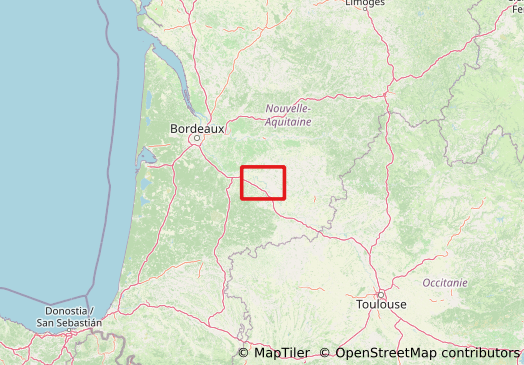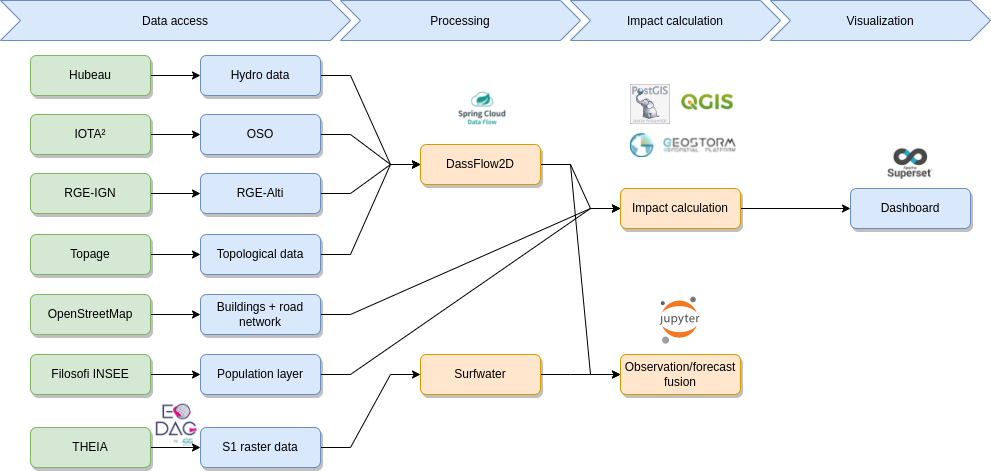Hydro Scenario 🏞️
Introduction
This tutorial aims to guide you through the hydro scenario.
Its objective is to study an intense hydrographic event having caused numerous floods in the Garonne valley following several days of rain in January 2022. The study area is located around Marmande.

Here are the different steps of the data processing chain:

Prerequisites
- Start the VRE on the "VRE minimal" environment.
- You have an account on the Harbor artifact repository.
Retrieving the sources
The first step is to start your development environment by clicking on
🔗 JupyterLab
or on the  icon at the top right of the Metis interface.
icon at the top right of the Metis interface.
Once Jupyter is running, activate the terminal and copy the content of the demo project.
To allow the tutorial to work properly, we ask you to copy the sources to the "projects" directory of your environment.
mkdir -p $HOME/projects/metis-demo-hydro
cp -r $HOME/demo/metis-demo-hydro/code $HOME/demo/metis-demo-hydro/misc/scdf-publisher $HOME/projects/metis-demo-hydro
cd $HOME/projects/metis-demo-hydro/code
git reset --hard origin/main
cd $HOME/projects/metis-demo-hydro/scdf-publisher
git reset --hard origin/main
Additional configuration
Configure access to S3 storage by creating the file$HOME/.aws/config:
[plugins]
endpoint = awscli_plugin_endpoint
[profile default]
aws_access_key_id = XXX
aws_secret_access_key = XXX
s3 =
endpoint_url = https://minio.mlflow.p1.csgroup.space
signature_version = s3v4
addressing_style = path
s3api =
endpoint_url = https://minio.mlflow.p1.csgroup.space
Install the processings publishing tool scdf-publisher:
Presentation of the launcher
The 🔗 launcher provides access to a whole collection of tools sharing the same data (same personal workspace) and the same computational resources.
The online help can be displayed in a permanently accessible pane and contains links to interact with the tools available on the platform. This help can also be externalized in a new browser tab to be, for example, moved on a second screen.